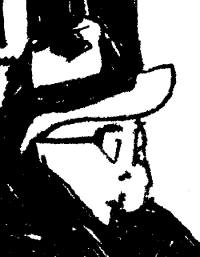|
You are reading the older HTML site Positive Feedback ISSUE 49may/june 2010
Joaquin Rodrigo, Sergio Assad; Concerti for Guitar Quartet and Symphony Orchestra: The Los Angeles Guitar Quartet, Delaware Symphony Orchestra, David Amado, cond: TELARC TEL-31754-02 (CD 54:49). Max Dudious Rodrigo's Concierto Andaluz for guitar quartet and orchestra (1967) looks backward a bit to his own Concierto Aranjuez for single guitar and orchestra (1939), which in turn looks to the 18th and 19th century to find structural and motivic hints. Closely reading the album notes, we find nearly the same elapsed time for the movements of the two Rodrigo concerti. Closely listening to the Andaluz, one hears the familiar "Yah dih Daaah" phrase repeated in the exquisite adagio movement, itself built over a classic passacaglia-type repeating bass line, and punctuated by the melodic interplay of the four guitars. If Bach and Mozart could borrow ideas from their earlier works, why oughtn't Rodrigo? If (as is said) "the guitar is the soul of Spanish music," Concierto Aranjuez must be the soul of Spanish classical music (being numbered among the most performed and recorded of all concertos), and Concierto Andaluz is its descendant. If you like the former, you'll probably like the latter. [If you'd like to read what I had to say a few years ago about Concierto Aranjuez, go to https://positive-feedback.com/Issue23/dudious_aranjuez.htm.] Briefly, the Aranjuez is a more unabashedly emotional piece, while the Andaluz is more highly cerebral (having to deal with the counterpoint of four guitars, which has a predecessor in Bach's Concerto for Four Harpsichords, BWV 1065), and I find a more delicate experience. If the Aranjuez is gut-wrenching in spots, the Andaluz tickles the musical historian in me to find the passacaglia, place it as one of Bach's favorite devices, and hear how Rodrigo incorporates it into his music and makes it new. The Andaluz is lovely as well as historical, as Rodrigo has a gorgeous touch when writing for orchestral strings. Conductor David Amado is quick to bring the Delaware Symphony Orchestra to heel, able to make it to sound very European and ethereal in the adagio. Nice job. Sergio Assad's recent Interchange Concerto is written for the same forces, yet it leans away from the 19th century and into the 21st, using the metaphor of converging freeways in downtown L.A. (an interchange) to stand for the melding of various musical traditions in this one work. The first movement, called "Sephardic Passage," features Hebraic modes played in a neo-Klezmer style. The second movement, "Gypsy Slopes," is a mixture of Spanish gypsy music with Hungarian scales. The third movement, "Pacific Overlook," is "reminiscent of a jazz ballad, with some hints of Asian colors and textures." The fourth movement, "Forroblues Detour," is a mixture of Brazilian rhythms and American blues. The last movement, "Crossings," recapitulates the themes and rhythms of the preceding movements. It is pretty eclectic, one-world (with Willkie) kind of music. I like it a lot because I get a sense that music is music, and the similarities are more pressing than the differences. In both concertos, the LAGQ shows a very understated command; the ability to play rapidly or slowly as the score indicates, to carry the varying rhythms along with various strumming and single string technique, they are always "there." The LAGQ has great investment in both pieces, being able to show their individual chops to advantage. They earn the right to be considered the heirs to the legacy of Los Romeros, and that is about as high praise as I can muster. In the hands of Maestro David Amado, The Delaware Symphony Orchestra is passing out of ‘musical adolescence' into its full maturity, as the Cincinnati SO did under Paavo Jarvi. The DSO shows flexible musical technique and broad emotional range, and deserves to be followed with interest. And, once again, Telarc engineering does a much more than competent job. For example, we can hear how the four guitars are spaced like a horseshoe around the podium. That layering illusion is particularly tough to capture in stereo, but they get it. Encomium (XX's) and accolades (OO's) all around. Highly recommended.
|

